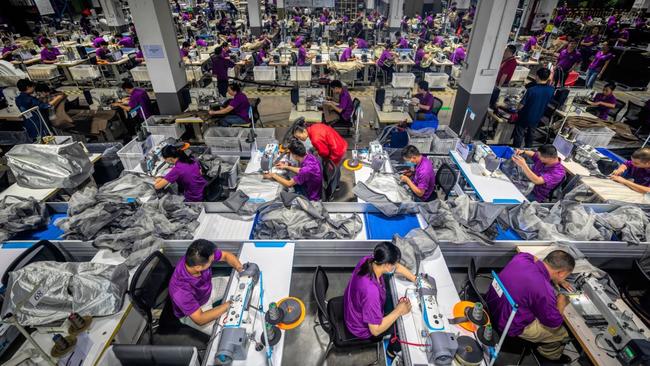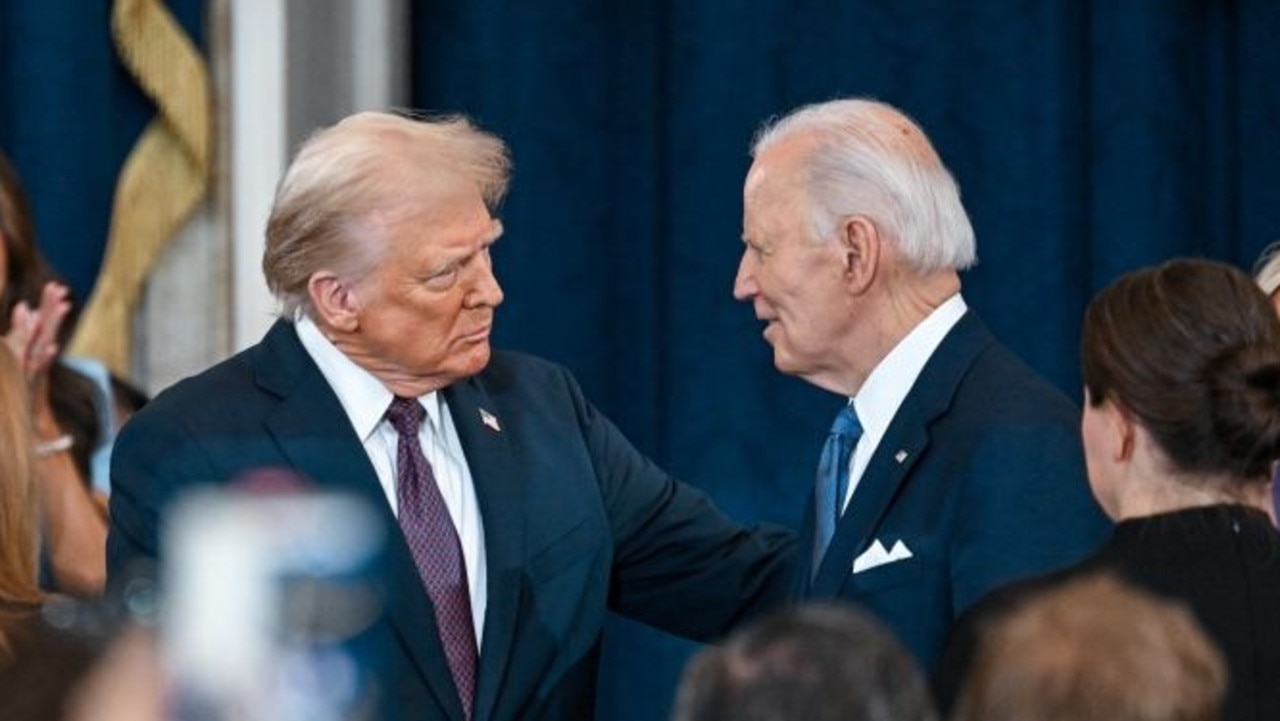China holds fire after President Trump lifts tariffs
China has held back from immediate retaliation for higher US tariffs, unlike in past rounds.

China has held back from immediate retaliation for higher US tariffs, unlike in past rounds, taking time to weigh its options amid uncertainty over how the Chinese economy would weather a full-blown trade conflict.
A failure to break an impasse in talks in Washington on Friday opened a new phase in the trade fight after more than five months of back-and-forth negotiations. This time, some economists and analysts said, Beijing was taking stock of potential economic damage from higher tariffs.
The US on Friday raised punitive tariffs from 10 per cent to 25 per cent for $US200 billion ($286bn) in goods leaving China. President Trump also ordered staff to begin the paperwork to impose levies on the more than $US300 billion worth of everything else China sells to the US.
Beijing has met previous volleys of tariffs from the US by raising duties on American goods.
Though China has more limited tariff options, since it imports fewer products from the US than the other way around, the Chinese leadership is also constrained by an economy that is in a shaky recovery from a sharp slowdown.
The tariff escalation is worrisome for Chinese officials, who are watching potential ripple effects, from weakening of the currency to crimping future foreign investment. Raising existing tariffs or imposing new ones could hit products China’s economy needs, like semiconductors, pork, oil and passenger jets.
A wider-scale trade conflict could also force Beijing to further ease credit and boost government spending to shore up growth, doubling down on the stimulus used last year at a time some analysts say it should be ratcheting back such measures.
“China doesn’t want to fan the flames,” Mark Wu, an international trade professor at Harvard University, says. “It wants to be seen as the reasonable party and open to compromise.”
China’s lead negotiator, Vice Premier Liu He, told Chinese reporters before leaving Washington that the domestic economy is in better shape than last year, with sufficient policy tools and business confidence to withstand pressure and “maintain smooth, healthy development”.
In the aftermath of Friday’s impasse, Mr Liu stressed that negotiations haven’t broken down — a message amplified by state media. Rather, according to video clips posted online by state media, Mr Liu said negotiations “encountered unavoidable complications” and the two sides had agreed to meet in Beijing in the future.
Negotiations between the US and China seemed to be heading towards an agreement earlier this month when, according to Mr Trump and US officials, Beijing backtracked on commitments made in earlier rounds. Those included listing specific laws in the agreement that China would change, covering intellectual property protection, subsidies and forced technology transfers, according to people in the US and China following the talks.
Mr Liu, in remarks reported by the Hong Kong news site Phoenix New Media Limited, didn’t specify what caused the negotiations to founder. He denied that the Chinese side backtracked, saying in any negotiation changes were natural before a final agreement was reached.
How Beijing moved ahead in coming weeks was likely to depend on its reading of the economy and on the US’s willingness to negotiate, the economists and analysts said.
“The most important thing is to not appear weak and cave in to the US,” says Arthur Krober, founding partner at research firm Gavekal Dragonomics. A likely scenario for Beijing, he says, is to “look like you’re staying the course, offer some discreet support if necessary, and hope they can get this thing resolved in next month.”
The higher US tariffs on $US200bn of Chinese goods will slow China’s economy by 0.2 to 0.3 percentage points this year, according to Barclays Research. Fresh 25 per cent levies on the remaining $US325bn in Chinese goods could further drag down growth by up to 0.5 percentage points in the next 12 months, after tariffs went into effect, it said.
“The moment Trump announces a date for tariffs on all Chinese goods, that’s the moment the yuan will drop,” says Bo Zhuang, an economist at research firm TS Lombard. He estimates authorities would allow the currency to swing to as weak as 7.6 yuan to the US dollar, a level that would roughly offset the impact of 25 per cent tariffs on all Chinese imports.
In the next few weeks, China watchers think the leadership will hold back from drastic moves such as reducing banks’ required reserves. Though the two sides haven’t set a date to resume talks, President Xi Jinping and Mr Trump are both scheduled to attend a Group of 20 meeting in Japan at the end of June, giving negotiators a target to work towards.
For now, Beijing has only hinted at more stimulus. The central bank on Monday announced a small cut to the amount of reserves certain banks have to keep with it, a show of policy support just after the US threatened tariffs. On Friday, central bank deputy director Zou Wei said in a media briefing that financial support for the property sector would be stable this year.
Previously, Beijing had been expected to ease up on stimulus. Now, “Beijing cannot afford to roll back stimulus,” said Lombard’s Mr Zhuang. “They’ll have to continue to boost to make less concessions in the trade deal.”


